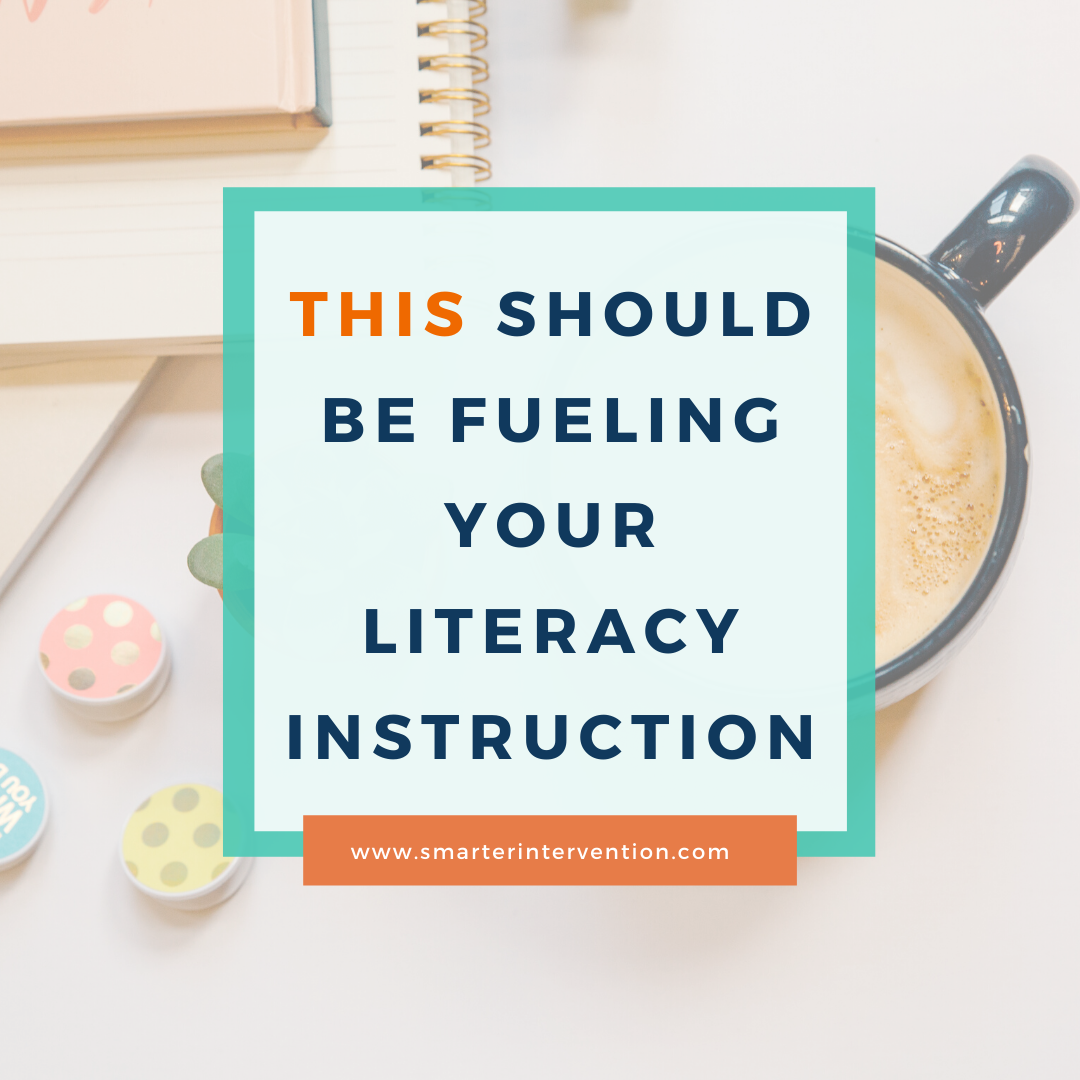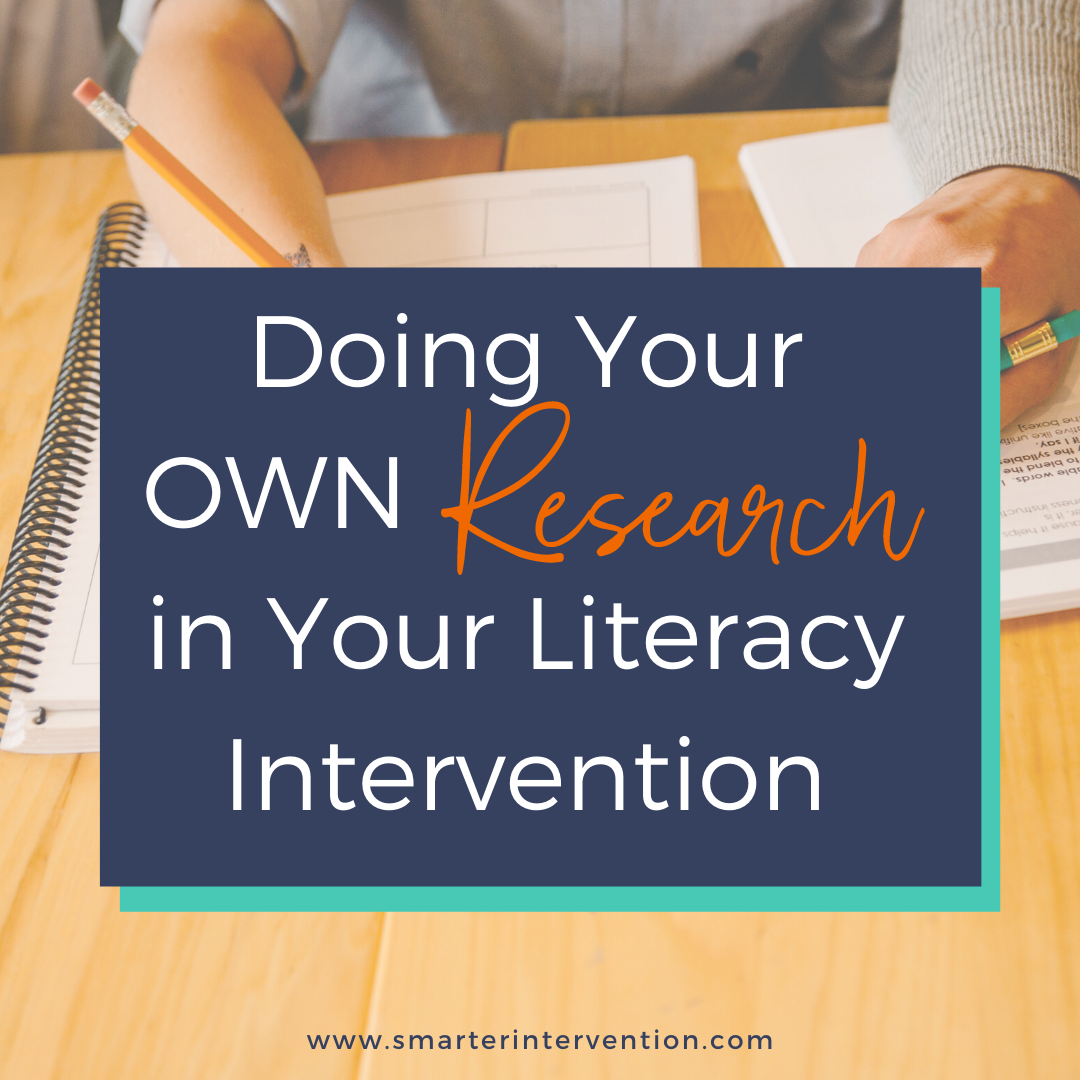Science-based literacy resources and articles
for families, educators and schools
Search by Category:
Categories
- Advocacy
- Authentic Literature
- Business
- Comprehension
- Data Tracking
- Differentiation
- Dyslexia
- Evaluation and Assessment
- Executive Functioning
- Games & Activities
- Helping My Child At Home
- How To
- IEP/504 Plan
- Lesson Planning
- Math
- Online Intervention
- Organization
- Parents
- Phonics
- Phonological Awareness
- Reading Comprehension
- Reading Fluency
- Research
- SLP
- Spelling
- Vocabulary
- Writing
Effectively Implementing the Science of Reading: Combining Science and Art
When we look at the practice of teaching reading, there are two steps that we follow. Check out the blog to learn what these steps are and how to best combine the science/what the research tells us with your own data & experiences with students for the most effective SOR-based lessons.
Time Spent Testing My Students is Taking Away From Instruction Time (or is it?)
It can absolutely feel like all the time we spend evaluating could be better spent actually TEACHING our students the skills, right?
But the truth is - it is a critical component of our instruction.
While we are just as eager to jump into concepts with our students and get them the instruction we KNOW they will need, we have to recognize that assessments and data should be providing us incredibly valuable information that sets the trajectory for where we need to go.
The One Thing You Can't Leave Out in Reading Intervention
We’ve been at this for a while now! We’ve worked with hundreds of struggling students in a variety of different settings and one of the most important things we’ve learned is that students DO NOT struggle with reading for the same reasons!
And this is SO important to recognize, because if we don’t recognize this, then we try to support struggling readers using all the same strategies, and the bottom line is that just doesn’t work. For many reasons, but most importantly because in order to support ALL struggling readers, we need to know WHY they’re struggling to read!
This Should be Fueling Your Literacy Instruction
When we think about our literacy intervention - we can compare it to driving a car. We know that in order to get to our final destination (in this case that is getting students to grade level), we need gas or some sort of fuel. Keep reading to learn about what part of your literacy intervention is the fuel that will allow you to get to your final destination.
The Key to Advocating for Your Students in IEP Meetings
Have you ever felt dismissed, talked over, or doubted in your intervention? When I walked out of the school after my first IEP meeting, I had this awful feeling of defeat knowing that I wasn’t taken seriously, but worse, I wasn’t able to advocate for my student they way I wanted to and knew I could. Keep reading to learn about the key to advocating for your students in IEP meetings.
How Data-Tracking Makes Classrooms Equitable
As educators we are capable of changing the world - one of the best ways we can continue doing this is by leveling the playing field for our students, so every child can be as successful as they can be. In order to level the playing field, we must have clarity around our students’ strengths and difficulties and we must make sure that we’re able to understand this in an equitable way. Educational equity is absolutely crucial because it gives equal opportunities to children. Data-tracking can help set us up for educational equity - keep reading to learn more about educational equity and how data-tracking can help us make our classrooms more equitable for all of our students.
Doing Your OWN Research in Your Intervention
As literacy interventionists, we are told all the time about the importance of “research-based” intervention but no one tells us that this should include our own research! Click through to read more.
The Wrong Ways to Use Data
When we are trying to determine which areas we should focus on with our students we are using our data to provide a guide, a roadmap.
But one of the biggest mistakes we see (we know because we’ve been there) is that we aren’t using data to drive decisions because of two big blocks.
The Common Literacy Intervention Belief that Could Be Holding You Back!
Assuming a program, even an evidence-based program, works for all students without tracking your own data and adjusting as needed, puts students at risk to continue falling through the cracks. Click the image above to read more about a common belief that may be holding you back in your intervention.
How to Track Literacy Data Digitally
While 2020 was an interesting year to say the least, we were glad to have learned so many lessons. One of which, was how to stay organized in a completely digital space. We transitioned lessons to a completely digital format, student interaction, you name it! And with all the changes, we realized Tracking data digitally was another great way to communicate students’ growth and what was happening in our sessions with our students’ parents and with our colleagues. Today, we wanted to walk you through how we track our literacy data in a digital format!
The Missing Piece in the Data-Tracking Process
One of the biggest mistakes we see in intervention is when interventionists take all of this time to collect wonderful data, but then not effectively sharing it with those who have a vested interest in the results - click here to read more about how you can EASILY share your results and grab a FREE resource that will help you do so!
How to Analyze your Literacy Intervention Data
We are back again with the next step in Data Tracking! This week we are talking all about analyzing your data. Now, we know that the word analyze brings about a heavy weight - but hear us out. Analyzing your data doesn’t have to be hard. One of the biggest mistakes we see is when well-meaning interventionists and SLPs rely on evidence/research based programs without analyzing their own data to make sure that students are actually making growth.
How to Organize Your Session in a Way That Makes Data Tracking EASY
We know that data and data-driven instruction are CRITICAL to effective intervention so a few weeks ago we asked if you all would be interested in a free training around the subject of taking and using data in your lessons. The response was an overwhelming yes. That’s where “Data-Tracking December” was born. All month long, we will be releasing our data-tracking trainings and want to invite you to take this information (and a free resource - stay tuned next week!) and implement it in your sessions so that you can easily get students the results you have always wanted for them.
How To Collect Reading Intervention Data
It’s Data-Tracking December! All month long we will have blogs and video trainings for you related to the 4 biggest mistakes we’ve made in data-tracking. If you are looking for a way to better track your intervention data or you’re hoping to understand how to use that information more effectively to drive your instruction, then stay tuned because these next four weeks will deliver exactly what you are looking for.
Why We Must Track Data Effectively in Literacy Intervention
Today we’re jumping right into one of our favorite things to talk about!
Literacy Intervention Data!!!
We’re fun at parties (well at least back when there used to be parties), trust us…
We know that diagnostic prescriptive instruction following a systematic and structured approach is the most effective way to get students to grade-level and beyond, but how exactly can we provide truly diagnostic and prescriptive instruction?
How to Identify Reading Breakdowns - Intervention Tip of the Week
This week’s reading intervention tip of the week - knowing how to identify reading breakdowns!
In this quick video we talk about the 5 key components you must be evaluating when you are looking for where a student may be breaking down.
If you know us well, you may have guessed them!
And in this video, we talk about how you can do this quickly! You can always use your own materials to make this work at your students’ grade and ability level but this will give you an outline on what it should include!
Measuring Student Progress
One of the most important things we have to consider when we are supporting struggling students is:
How we will measure student progress?
This is absolutely CRITICAL in making sure that the plan we have designed to help them get back on track is actually working. This is proof that we are on track.
As parents of struggling students, we need to be requesting this information.
As educators responsible for delivering on student plans and goals we need to be sure we are tracking this information.
So the question becomes, what on earth are we looking for and how do we appropriately measure student progress?
How to Know Where Students are Struggling
This week we are so excited to share information on identifying student challenges.
One of the most challenging aspects of helping a struggling reader is understanding specifically where and why they are struggling.
Once we can understand the specific areas in which a student is breaking down and/or the cause of the breakdown we can begin providing targeted instruction and intervention.
















